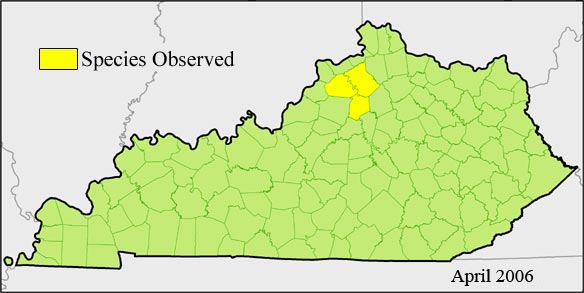P�h�o�t�o� �b�y� �K�S�N�P�C� �S�t�a�f�f�
|
Habitat:
Rocky, wooded slopes on blackish clay loams over limestone or acid limestone cobble.
|
Species Description:
A decumbent, spreading perennial herb with round, fuzzy-grayish-green stems that grow 1-8 dm long arising horizontally from a basal rosette of leaves. Both sides of the alternate leaves, and the stems, are densely covered with fine, white, matted hairs, giving the plant a grayish appearance. Produces white to lavender cross-shaped flowers in late March-early May. The fruits are long pods (siliques), containing reddish- brown, flattened seeds about 1mm long.
|
Phenology:
Flowering Period: Early April to late May.
|
Additional Information at NatureServe
|
Diagnostic Characteristics:
This rock cress has a gray green appearance produced by the pubescence covering the stems and leaves; the hairs on both surfaces of the auriculate-shaped leaves are stellate. The flower petals are 3-5 cm in length.
|
Management:
Disturbance of surrounding slopes such as ATV trails or timber removal or any activity that results in increased erosion will be detrimental. Exotic pest plants are a threat to this species. Avoid changes in moisture conditions at the site. These could result from overstory removal, changes in hydrology (for example stream alteration or increased erosion ).
|
Global Range:
Tennessee (2 current records are from Rutherford County, with historical and extirpated records from Davidson County; all are in the Central Basin), Kentucky, and Alabama (questionable identification). Known range is from Kentucky sites along the Kentucky river system to northcentral Tennessee. Records under the name Arabis perstellata for Michigan, Virginia, and West Virgina are instead for Arabis shortii (sometimes treated as Arabis perstellata var. shortii), not A. perstellata as treated here.
|
Known Kentucky Occurrences:

|